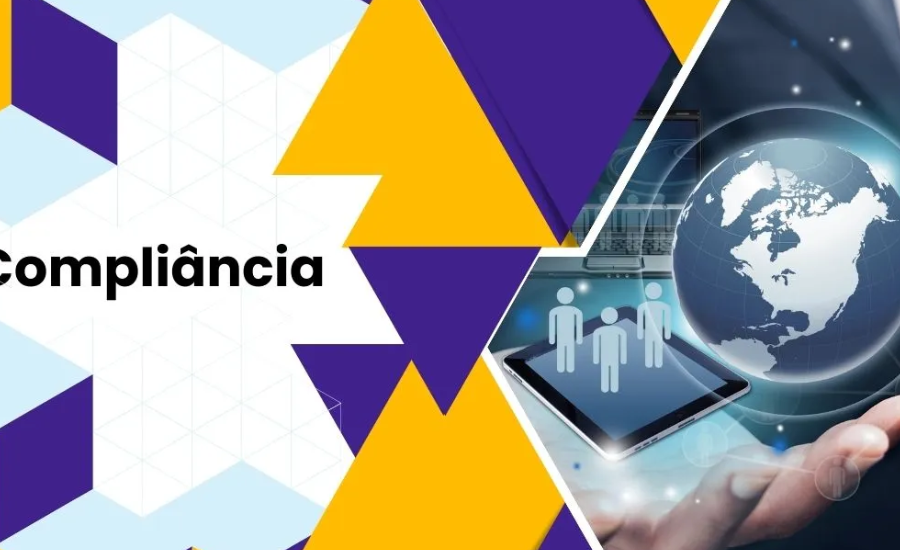In today’s intricate business environment, adherence to regulations, ethical standards, and industry practices is of utmost importance. This process, known as compliance, encompasses governance, risk management, ethics, and data protection. In this article, we explore the significance of compliance, its essential components, the hurdles it poses, strategies for implementation, metrics for gauging success, the role of technology in facilitating compliance efforts, and forthcoming trends in the field.
WHAT IS COMPLIÂNCIA?

Compliance encompasses the establishment and upkeep of standards, procedures, and audits to uphold integrity and adherence to relevant rules and regulations. Its core objectives include mitigating legal risks, safeguarding reputation, and mitigating financial losses resulting from regulatory violations. Furthermore, compliance initiatives enhance operational efficiency and inspire stakeholder confidence, nurturing sustainable business growth over the long term.
IMPORTANCE OF COMPLIANCE
Adherence to Ethical Standards and Mitigation of Consequences: Compliance serves as a guiding principle for ethical business conduct, minimizing the potential for severe repercussions associated with regulatory breaches.
Enhancement of Credibility and Trust: Prioritizing compliance showcases a dedication to ethical norms, fostering heightened credibility and trustworthiness among stakeholders.
Effective Risk Management: A robust compliance framework empowers organizations to identify, assess, and address various risks efficiently, thereby reducing the likelihood of penalties, financial setbacks, and harm to reputation.
Advancement of Sustainability Goals: Compliance intertwines with sustainability by encouraging responsible corporate behaviors that consider environmental, social, and governance aspects.
Strategic Importance: In today’s dynamic business landscape, compliance is not only a legal obligation but also a strategic imperative, offering a competitive advantage through a culture of transparency and enhanced market positioning.
KEY ASPECTS OF COMPLIANCE

Adherence to Legal and Regulatory Requirements: Businesses must remain updated on and adhere to applicable laws and regulations, conducting routine audits and evaluations to ensure compliance.
Commitment to Ethical Conduct: Beyond legal mandates, companies must uphold ethical standards through robust ethics policies and exemplary leadership.
Effective Risk Management: Proactively identifying and mitigating compliance risks is essential for maintaining effective compliance programs, necessitating ongoing training and monitoring efforts.
Protection of Data Privacy and Security: Safeguarding personal information is paramount, requiring strict adherence to regulations and the implementation of robust data privacy measures.
Emphasis on Continuous Enhancement: Compliance is an ongoing journey, demanding organizations to adapt to evolving regulations, risks, and business needs by regularly assessing and refining compliance programs.
Establishing a Robust Compliance Framework
Identify Vulnerabilities: Conduct thorough audits, reviews, and risk assessments to pinpoint areas of weakness and prioritize high-risk segments.
Establish Policies and Procedures: Clearly outline actions and behaviors in alignment with established standards and regulations.
Provide Training: Offer regular training sessions to educate employees on policies and compliance matters, tailoring programs to meet the specific needs of different departments.
Monitor and Audit Compliance: Consistently monitor operations, conduct independent audits, and investigate potential non-compliance instances to ensure adherence to standards.
Facilitate Confidential Reporting: Implement channels for anonymous reporting of misconduct to promote a culture of transparency and accountability.
Enforce Compliance Through Discipline: Enforce compliance requirements consistently by taking appropriate disciplinary action when necessary.
Continuously Review and Enhance: Regularly assess and update compliance programs to address emerging risks, regulatory changes, and evolving business requirements.
COMMON COMPLIÂNCIA CHALLENGES

Evolving Regulatory Landscape: The ever-changing and intricate nature of regulations presents a formidable challenge for organizations striving to maintain compliance.
Resource Allocation Challenges: Limited budgets and a shortage of specialized personnel pose hurdles for companies seeking to allocate sufficient resources to compliance endeavors.
Staying Abreast of Changes: Failing to stay updated on regulatory modifications can result in non-compliance and heightened risks for organizations.
Technological Integration: Increasing reliance on technology introduces new compliance complexities, particularly concerning data privacy, security, and risk management.
Global Compliance Considerations: Operating across borders amplifies challenges due to varying compliance standards and legal frameworks, necessitating a comprehensive understanding of international regulations.
Harnessing Technology For Compliance Efforts
Utilizing Technology for Compliance:
Compliance Software Solutions: Implementing centralized platforms automates various compliance tasks such as policy dissemination, training, audits, and remediation actions. This not only enhances efficiency but also promotes transparency across the organization.
Data Analytics Capabilities: Leveraging insights from data analysis helps in identifying compliance issues and areas for improvement. This, in turn, enables better resource allocation and informed decision-making to address compliance challenges effectively.
Automation of Processes: Streamlining compliance procedures through automated workflows minimizes manual errors and accelerates operational efficiency, ensuring tasks are completed promptly and accurately.
Integration and Tailoring: Integrating compliance software with existing systems and tailoring solutions to meet organizational requirements enhances functionality and user experience. This seamless integration allows for smoother operations and better alignment with specific compliance needs.
Continuous Enhancement: Regular evaluation and enhancement of technology solutions ensure they remain effective and aligned with evolving compliance standards and regulatory requirements. This proactive approach enables organizations to stay ahead of compliance challenges and adapt to changing regulatory landscapes effectively.
THE FUTURE OF COMPLIÂNCIA
AI and Machine Learning Integration: The integration of AI and machine learning technologies is poised to revolutionize compliance operations by enhancing efficiency, automating processes, and predicting potential risks more accurately.
Heightened Regulatory Scrutiny: Regulatory bodies are expected to ramp up enforcement activities, leading to stricter compliance and risk management protocols being implemented by organizations to mitigate potential penalties.
Enhanced International Collaboration: There will be an increased focus on international cooperation to standardize compliance requirements across different jurisdictions. This will compel companies to develop comprehensive global compliance strategies to navigate diverse regulatory landscapes effectively.
Emphasis on Ethical Governance:
In addition to regulatory compliance, there will be a growing emphasis on ethical conduct and corporate responsibility. This shift in focus will influence the development of compliance programs, prompting organizations to integrate ethical principles into their governance frameworks.
FAQs
What is compliance
? Compliance refers to the process of adhering to regulations, ethical standards, and industry practices to ensure integrity and legal adherence within an organization.
Why is compliance important in business?
Compliance is crucial for mitigating legal risks, protecting reputation, enhancing operational efficiency, and fostering stakeholder trust, ultimately contributing to long-term business success.
What are the key aspects of compliance?
Key aspects of compliance include adherence to legal and regulatory requirements, commitment to ethical conduct, effective risk management, data privacy and security, and continuous enhancement of compliance programs.
What challenges do organizations face in compliance?
Organizations encounter challenges such as navigating evolving regulatory landscapes, allocating resources effectively, staying updated on regulatory changes, integrating technology, and addressing global compliance considerations.
How can technology help in compliance efforts?
Technology aids compliance through the automation of tasks, data analytics for insights, integration with existing systems, and continuous enhancement of compliance software solutions.
Conclusion
In the intricate landscape of modern business, compliance plays a pivotal role in ensuring integrity, adherence to regulations, and ethical conduct. By establishing robust compliance frameworks and leveraging technology, organizations can navigate regulatory complexities effectively, mitigate risks, and foster sustainable growth. As the regulatory environment evolves and enforcement intensifies, organizations must prioritize compliance efforts, integrate ethical principles, and embrace technological advancements to stay ahead of compliance challenges. With a proactive approach to compliance, businesses can uphold trust, safeguard reputation, and thrive in today’s dynamic business environment.
Stay in touch for updates and alters visit: Asseturi.Us!
